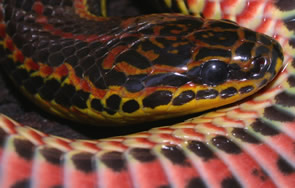
Farancia erytrogramma
Photo by JD Willson
Description: Rainbow snakes are large, heavy-bodied snakes closely related to mud snakes. Many people consider them to be among the prettiest snakes in the United States. This species has a shiny black back with three thin red stripes running its entire length. The rainbow snake gets its name from the iridescent sheen of shiny scales. The belly is yellow with two rows of prominent black spots. A third row of black spots may run down the center of the belly in some individuals. The scales are smooth, and the head is not much wider than the neck. Like mud snakes, rainbow snakes have spines on the end of their tails that they use to help control their prey, chiefly American eels.
Habitat/Range: Rainbow snakes inhabit large streams, small lakes and swamps, and fresh and brackish-water marshes. They are most abundant in the eastern and southern Coastal Plain
Reproduction: During early summer, the females lay 10–40 eggs on land, and the babies look similar to adults, only more brightly colored. Baby rainbow snakes eat various amphibians including salamanders and tadpoles
Miscellaneous: If captured, rainbow snakes do not bite and are generally very docile. Rainbow snakes are very secretive, active primarily at night. Consequently, very little is known about the these animals.
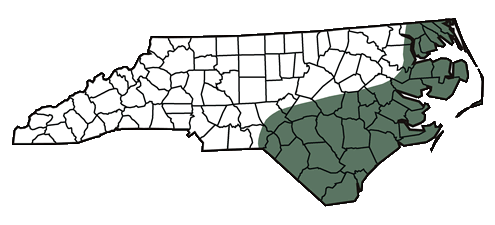
The shaded region represents the range of the rainbow snake in North Carolina.
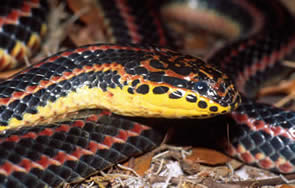
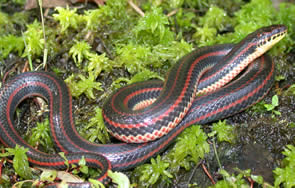
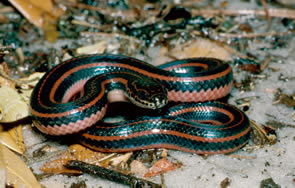
Photo by JD Willson
Photo by RW Van Devender
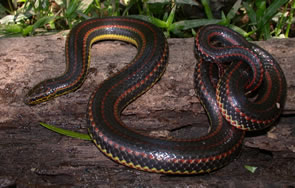
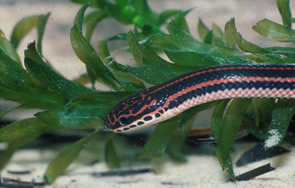

This website created by: J. Willson, Y. Kornilev, W. Anderson, G. Connette and E. Eskew.
For comments or questions contact M. Dorcas: midorcas@davidson.edu.
M. Dorcas homepage: http://bio.davidson.edu/dorcas
Davidson College, Davidson, North Carolina 28035-1719.
Text and maps from: Dorcas, M. E. 2004. A Guide to the Snakes of North Carolina. Davidson College - Herpetology Laboratory, Davidson, NC. – Copyright by Michael E. Dorcas.
Partial Funding for this website provided by a Associate Colleges of the South, National Science Foundation, and Duke Energy.
